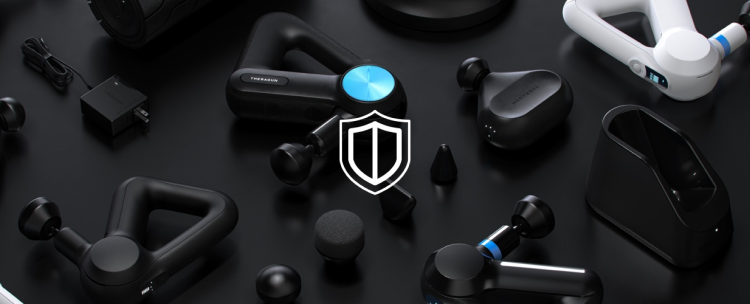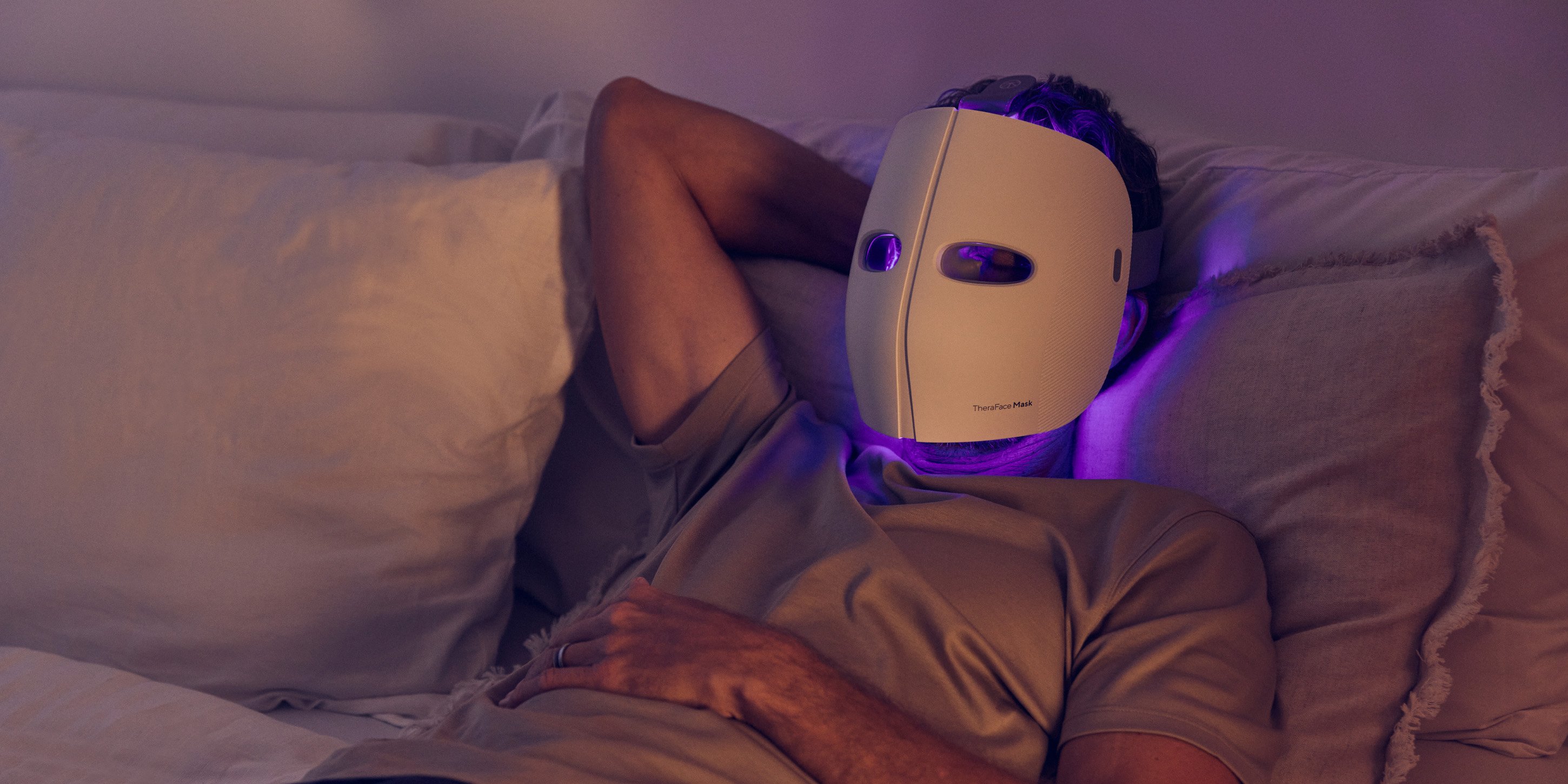Authors: Therabody Scientists: Tim Roberts, MSc; Rachelle Reed, PhD, MS, ACSM-EP; Kyle Silvey, PhD, CSCS; Michelle Darian, MS, MPH, RD, LDN
Acne is the most common skin condition — affecting people of all ages. While it’s often regarded as a temporary inconvenience, acne can have far-reaching impacts beyond physical appearance. From psychological distress to long-term scarring, this chronic condition can significantly impact an individual’s self-esteem, social life, and overall well-being.
Understanding the underlying causes and exploring effective treatment options, such as blue light therapy, is crucial in managing acne and mitigating its potential effects.
What is Acne?
Acne is the most common skin disease — approximately 10% of the global population has acne. It can be chronic (meaning it can come and go for years). [1]
Acne can present differently between people and even between breakouts. For example, it can look like lesions, open and closed bumps, and can even be red, painful, and swollen. Acne most commonly impacts the face, but can also pop up throughout the body, including on the neck, trunk, back, chest, shoulders, and upper arms. [2]
Impacts of Acne
The impacts of acne often extend beyond simply a day-long blemish on the face. The effects of acne can range from psychological (changes to social life and esteem) to physical (like long-term scarring). Let’s dive into the research on the impacts of acne:
- Psychological: A 2021 literature review looked specifically at the causes of acne in medical students (who tend to work in stressful conditions). The study found that medical students with acne reported psychological impacts, including negative self-image, lower confidence, embarrassment, depression, and anxiety. [3]
- Social Life Changes: Acne can also lead to changes in social life, with studies showing that acne leads to social withdrawal and impaired social behaviors. [3]
- Quality of Life: Acne can even negatively affect quality of life, defined as your ability to live with vigor and purpose, free from pain. [4]
- Scars: Acne can leave scars, especially if not treated properly. The scars can be thick and remain long after the original breakout has healed. [4, 5]
- Skin Pigmentation Changes: After acne has cleared, skin can appear darker (hyperpigmented) or lighter (hypopigmented) than before the acne occurred. [5]
- Inflammation: Lesions from acne can remain inflamed even after the acne has subsided. [4]
Causes of Acne
Research has identified several factors associated with the development and severity of acne breakouts. The impacts of each of these factors can vary from person to person. What might trigger acne for someone may not necessarily be the culprit for another.
Many studies on the causes of acne are observational, which establishes correlations rather than cause-and-effect relationships. Understanding the potential contributors can help to identify acne’s root causes. Knowing some of these common factors can help to address this skin condition.
High Body Mass Index (BMI)
A systematic review looked at risk factors for acne’s presence and severity. Individuals with a high BMI (those who fell into the obesity category) were more likely to have acne compared to those with a normal BMI. [6]
Family History of Acne
The same systematic review also found that if your parents have acne, you’re more likely to have acne than those whose parents did not have acne. [5, 6]
Eating Certain Foods
Eating certain foods can play a key role in acne’s development, duration, and severity. A review of 53 papers found that acne-promoting foods include fast food and those high in refined sugars, dairy, and chocolate. It turns out that certain foods were also protective against acne, including fatty acids, fruits, and vegetables. [7]
Stress Levels
Chronic stress can also exacerbate acne, according to a study on medical students who work in stressful conditions. [3]
Age
Acne tends to be more common in younger individuals, and its prevalence generally decreases with age. While it tends to start during adolescence— when hormones shift significantly — people of all ages can get acne. [1, 5, 8]
Skipping Face Washes
Some bacteria naturally live on your skin. If you have too much bacteria — like if you don’t regularly cleanse your face — your pores can start to clog. Clogged pores cause substances to plug up your follicles, creating a pimple. This triggers the inflammatory response, resulting in redness, soreness, and swelling around the pimples. [9]
How to Treat Acne with Blue Light Therapy
Traditional topical and oral medications have long been the go-to solutions to protect against acne. However, as researchers continue to unravel the complex factors contributing to acne, including the roles of bacteria and inflammation, alternative treatment approaches have emerged. One such promising therapy is the use of blue light. Studies show blue light’s potential to improve and treat acne, particularly inflammatory acne. [4, 10, 11]
Blue light therapy harnesses the power of specific wavelengths of light to target the root causes of acne. Unlike longer wavelengths that penetrate deeper into the skin, blue light is shorter in wavelength, making it an effective treatment for addressing issues on the skin’s surface, such as acne.
The key mechanism behind blue light’s efficacy lies in its interaction with the bacteria responsible for acne formation. As mentioned earlier, an accumulation of bacteria on the skin can contribute to developing acne. These bacteria produce compounds called porphyrins, which readily absorb blue light. When exposed to blue light, these porphyrins release singlet oxygen molecules that effectively kill the acne-causing bacteria, reducing inflammation and promoting healing. [10]
Key Takeaways
- Acne is the most common skin disease that can have psychological, social, and physical impacts, including scarring and changes in skin pigmentation.
- Factors associated with acne development and severity include high BMI, family history, diet (e.g., fast food, dairy, chocolate), stress levels, age, and improper face cleansing habits.
- Blue light therapy is a promising alternative treatment approach that targets the bacteria and inflammation responsible for acne formation.
- Understanding the potential contributors to acne and exploring innovative treatments like blue light therapy can help manage this chronic skin condition.
References:
- https://pubmed.ncbi.nlm.nih.gov/34691199/
- https://pubmed.ncbi.nlm.nih.gov/29127053/
- https://pubmed.ncbi.nlm.nih.gov/33128470/
- https://pubmed.ncbi.nlm.nih.gov/34696155/
- https://www.mayoclinic.org/diseases-conditions/acne/symptoms-causes/syc-20368047
- https://pubmed.ncbi.nlm.nih.gov/32238884/
- https://pubmed.ncbi.nlm.nih.gov/33462816/
- https://www.niams.nih.gov/health-topics/acne
- https://my.clevelandclinic.org/health/diseases/12233-acne
- https://pubmed.ncbi.nlm.nih.gov/20633796/
- https://pubmed.ncbi.nlm.nih.gov/31712293/







